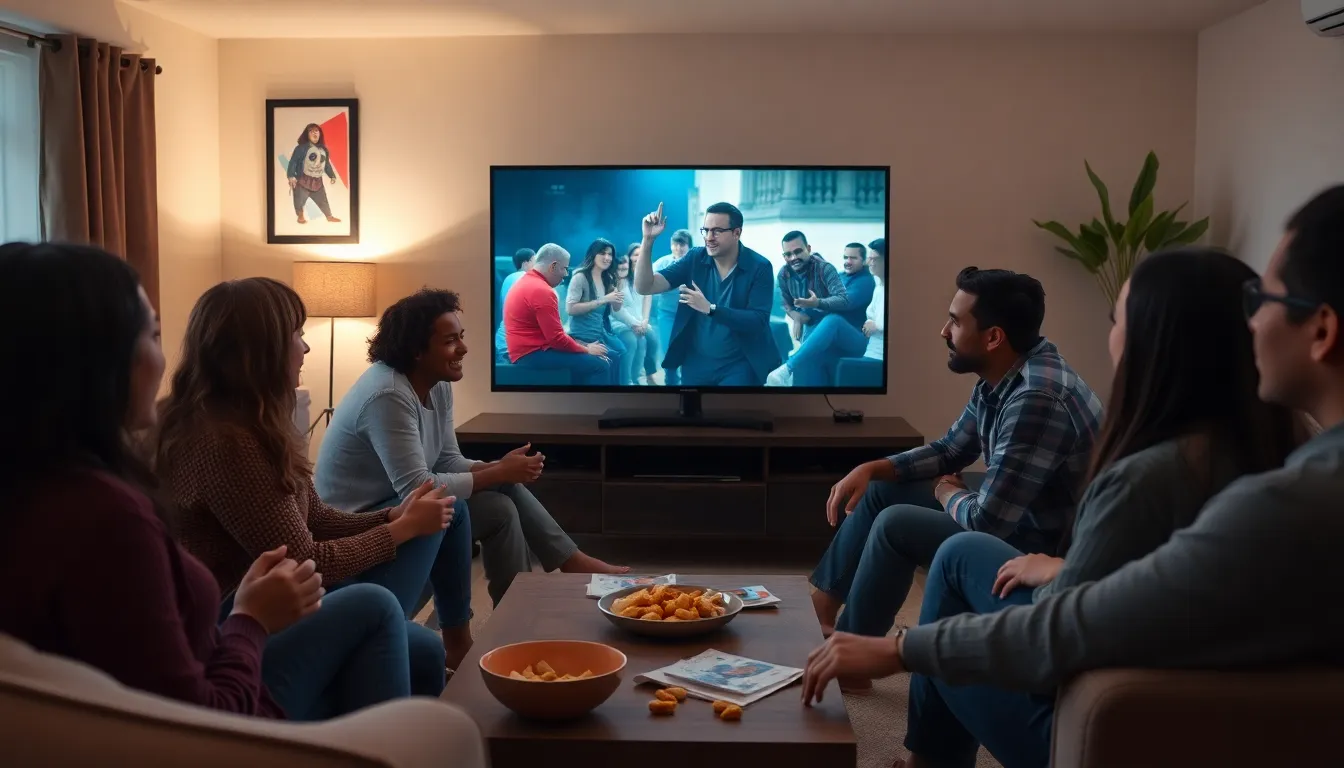Table of Contents
ToggleIn a world where binge-watching has become a competitive sport, the pacing of a TV show can make or break the entire experience. Viewers crave that perfect blend of suspense, drama, and just the right amount of cliffhangers to keep them glued to their screens. But let’s face it—some shows have pacing that feels more like a leisurely stroll through molasses than a thrilling rollercoaster ride.
That’s where TV pacing reviews come in. They dissect the rhythm of storytelling, helping viewers navigate the vast sea of streaming options. Whether you’re a casual viewer or a die-hard fan, understanding pacing can elevate your TV-watching game. So grab your popcorn and settle in as we dive into the art of pacing, revealing what works, what doesn’t, and why it all matters for your next binge session.
Understanding TV Pacing
TV pacing refers to the rhythm of storytelling in television shows. This aspect can influence how viewers engage with the narrative and its characters.
Definition of TV Pacing
TV pacing describes the timing and speed with which a story unfolds. It involves the allocation of scenes, dialogue, and character development. Fast pacing quickens the plot, enhancing excitement and tension. Slow pacing allows for deeper character exploration and emotional moments. Effective pacing maintains viewer interest while encouraging emotional investment in the story.
Importance of Pacing in Television
Pacing plays a crucial role in viewer experience. Proper pacing makes narratives compelling, helping maintain suspense and drama. Each episode’s flow can either engage or frustrate audiences. Viewers connect with characters more deeply when pacing supports their development. Additionally, thoughtful pacing enhances binge-watching, as it keeps audiences hooked across multiple episodes. In contrast, inconsistent pacing can lead to disengagement, detracting from the show’s overall impact.
Factors Influencing TV Pacing

Pacing in TV shows depends on several key factors that shape the viewer’s experience. Different genres utilize distinct pacing techniques that cater to their narrative styles.
Genre-Specific Pacing
Thrillers often employ fast pacing to build tension and suspense, captivating audiences with rapid twists. Dramas may use slower pacing to delve into character development, allowing viewers to connect emotionally with characters. Comedies, depending on the situation, typically incorporate a quick-witted dialogue style to maintain a lighthearted tone. Science fiction shows might alternate between fast and slow pacing to balance action with complex world-building. Each genre’s unique pacing approach directly affects narrative comprehension and viewer enjoyment.
Audience Engagement Techniques
Engaging viewers requires strategic pacing methods that vary by show. Cliffhangers at the end of episodes encourage binge-watching, prompting viewers to watch the next installment. Flashbacks provide context, enhancing the story’s depth while offering brief pauses in the main narrative. Interactive elements in some shows invite viewer participation, creating a sense of involvement. Additionally, varying pacing during climactic moments heightens excitement, ensuring the narrative remains compelling. These techniques work together to maintain audience interest and emotional investment.
Common Pacing Issues in TV Shows
Pacing issues can significantly affect viewer engagement in television shows. Understanding these common problems helps creators refine their storytelling.
Slow Pacing and Viewer Drop-Off
Slow pacing often leads to viewer disengagement. While it allows for deeper character development, excessive slowness can create tedium. This experience causes audience members to lose interest, especially in genres relying on suspense, such as thrillers. Data shows that shows with long stretches of inactivity may experience drop-offs, with nearly 30% of viewers abandoning episodes when the narrative drags. Characters may lose relatability if their motivations remain unexplored for too long. Most viewers prefer a balance; slow moments should enhance rather than hinder the plot’s momentum.
Fast Pacing and Audience Confusion
Fast pacing can create confusion among audiences. Rapid shifts in scenes may overwhelm viewers, leaving them struggling to keep up with the narrative. In action-packed sequences, vital plot points often become lost, leading to frustration. Statistics reveal that shows with excessive fast pacing face a higher risk of viewer disconnection, with around 25% of people stating they feel disoriented when plots move too quickly. Clarity suffers when critical character motivations and relationships require more exposition. Compelling narratives require deliberate pacing to maintain understanding and engagement while delivering excitement.
Analyzing Recent TV Pacing Reviews
Recent reviews highlight how pacing shapes viewer engagement in critically acclaimed shows. Breaking Bad, for instance, utilizes a tension-filled rhythm to enhance storytelling. Viewers often appreciate the calculated pacing that allows characters to evolve while building suspense. The Crown exemplifies slow pacing, inviting deeper character exploration and emotional investment. These shows engage audiences through deliberate pacing strategies that sustain interest over multiple episodes.
Conversely, several shows face critiques over pacing issues. Game of Thrones experienced backlash during its final seasons due to rushed narratives and hurried character arcs. Viewers reported confusion stemming from rapid scene transitions, resulting in feelings of disorientation. Similarly, The Walking Dead highlighted slow pacing at times, leading many to abandon episodes from tedium. Statistics show around 30% of viewers drop off in suspense-driven genres when pacing lags, emphasizing the impact of pacing on retention.
Understanding TV pacing is essential for both creators and viewers alike. It shapes how stories unfold and how audiences connect with characters. By recognizing the nuances of pacing, viewers can make informed choices about what to watch and appreciate the craftsmanship behind their favorite shows.
As the landscape of television continues to evolve, pacing will remain a critical factor in storytelling. With the right balance, shows can captivate viewers and create memorable experiences that resonate long after the credits roll. Keeping an eye on pacing reviews can enhance the overall enjoyment of TV watching, ensuring that audiences find content that suits their preferences and keeps them engaged.




